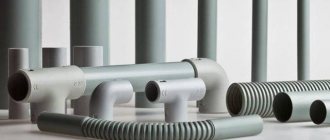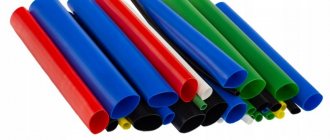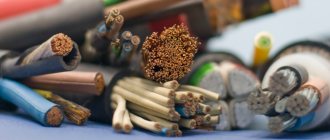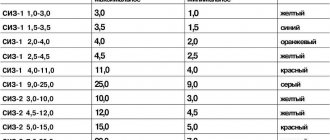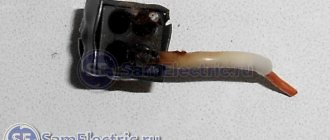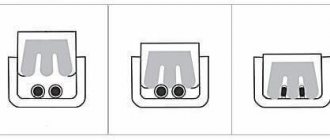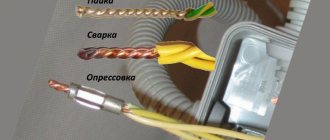Peculiarities
When carrying out a major renovation, a person changes everything in his house, including the wiring.
A new junction box is installed where wiring needs to be done. To do this better, it is best to use terminal blocks. This is an excellent device that will provide tight fixation for the entire period of operation. Today, new types of this product are being produced, which are many times superior to screw ones. To carry out installation and wiring, a person will need a minimum of time. This was largely made possible thanks to self-clamping terminals.
Modern methods of connecting wiring in a box
The so-called quick fix pads. These products are widely offered in online stores and building materials markets.
Indeed, such devices make installation quick and convenient. The appearance of the connection is also pleasant. Therefore, such “electric clips” are loved by electricians who perform custom work.
However, this method has serious drawbacks. Let's make a reservation right away: the manufacturer does not promise high connection power: the characteristics are on the case. For an LED lamp, connecting a computer or TV - just right. But a refrigerator, electric stove, boiler cannot be connected through such a distribution box.
The contact area in such “quick releases” is small; the pad is connected to the conductor tangentially. With a light load, the current does not heat the surface too much. And when a serious consumer is connected, sparking, heating, and burning out of the connection will begin.
When to connect cables
Cable connections will be required in case of poor-quality wiring performed earlier, or due to errors made during installation work. To restore power to the house, you need to connect the electrical wires. You can make a connection in ways that are divided into 2 groups:
- For the first group, no special equipment is required.
- The second group already requires certain skills and professional tools.
Work on connecting cables must be carried out in compliance with safety regulations.
Causes of malfunction and main elements
Broken wires are a common occurrence and most often occur unexpectedly. Most popular problems:
- Poor contact with various equipment;
- Short-term loss of light;
- Strong heat generation in some areas.
To prevent breakdowns, it is necessary to detect the problem in a timely manner and take appropriate measures to eliminate it. For fixation, it is best to use terminal blocks, as they can provide a person with reliability and durability. In addition, they are easy to install, which will allow you to use them at home without any problems.
Today in stores there are hundreds of varieties from top companies, which differ in price and technical parameters. But besides this, the difference may lie in the method of fixation.
All terminals consist of two elements:
- Plastic case, which is made in the form of cells;
- A brass pipe with a threaded hole on both sides.
When fixing the cable, it is important for a person to remember that the pipe may differ in diameter, especially if you plan to connect thick wires. Therefore, you first need to choose the right size. This installation can be used in any area: from household to car wiring repair, which makes the product universal. Most often, the element is used when connecting a lamp with a short conductor.
It is important to know the negative sides of such fixation:
- Self-clamping options are designed for use with specific cables. They are not suitable for connecting elements with a larger cross-section.
- If a person bought disposable terminal blocks, then he should remember that they cannot be used to fix flexible wires, since they are not intended for this.
- It is also worth understanding that the product is afraid of exposure to high temperatures. If it is constantly used in such an environment, then over time the spring will weaken, causing the contact pressure to decrease and the connection density to be lost.
- The terminals provide good fixation, but if you have the opportunity and experience to carry out soldering, then it is better to do it, it will be much more reliable.
The main advantage of the element is the ability to connect copper and aluminum wires. In addition, by using terminal blocks, the chance of contact oxidation is reduced significantly. This became possible due to the fact that the screw clamps the cable so tightly that contact between the cores becomes impossible.
General rules for switching electrical cables in distribution boxes
Of course, all requirements for energy supply are set out in the PUE.
This is an electrician's reference book. Moreover, there are fines for violating the Electrical Installation Rules. However, in practice, all these strictures apply only to institutions and organizations. In private households, responsibility ends with the wire coming out of the meter (electricity meter). The rest is up to the homeowner. To prevent an incorrect connection from leading to a fire or electric shock, you must follow simple rules:
- The connection of wires in the junction box is made during a complete power outage. Even if the electrician is wearing dielectric gloves and is familiar with safety rules, accidental contact of the phase wire with structural elements of the building or grounding is possible.
- The type of connection must be the same for each line within the same box. This will protect your line from loosening under load.
- Physical contact of conductors made of different materials (copper with aluminum) is not allowed. When electric current flows, active electrocorrosion occurs. Metals are coated with an oxide film, which impairs contact. The result is sparking, overheating, and complete burnout of the contact connection. If such a need arises, it is necessary to tin the wires using solder. After twisting, the connection must be soldered for at least 50% of the length.
The rest of the strand will not corrode because no current flows through it under load. - It is necessary to exclude the possibility of exposed conductors leaving the box. Even if the cable is completely laid in the wall.
- When connecting without contact devices, that is, using soldering, twisting or welding, an insulating cap must be placed on the exposed conductor. The insulator must be firmly fixed; non-combustible materials are used in its manufacture.
- The ends of the wires inside the box must have at least a 200% margin along the length of the connecting ends. In the event of a break or burnout, it will be possible to re-install without laying a new wire.
In addition, inexperienced electricians often make mistakes and break off wires when stripping the insulation. If the wire is inserted into the box under tension, reconnection will be impossible.
Advantages and disadvantages of connecting wires with terminals
Let's consider the positive qualities of using terminals. These are the following advantages:
- connection security;
- the occurrence of a spark is excluded;
- durability and reliability during operation;
- high degree of rigidity;
- simplicity during installation.
You can use the terminals yourself. During installation, use a regular screwdriver. During installation, it is important to know how to connect the wires in the junction box.
The choice of connection method depends on the material of manufacture of the cores, their cross-section, the number of wires and installation conditions.
The internal structure of the terminal with levers.
What is a junction box
From the electrical panel, the wires disperse throughout the rooms in the house or apartment. Each room, as a rule, has more than one connection point: there are several sockets and a switch. To standardize the methods of connecting wires and collect them in one place, distribution boxes are used (they are also sometimes called branch boxes or junction boxes). They contain cables from all connected devices, the connection of which occurs inside the hollow housing.
In order not to look for wiring during the next repair, it is laid according to certain rules that are prescribed in the PUE - Rules for the Construction of Electrical Installations.
Electrical wiring rules
One recommendation is to carry out all connections and branch wires in the junction box. Therefore, the wires are run along the top of the wall, at a distance of 15 cm from the ceiling level. Having reached the branch point, the cable is lowered vertically down. A distribution box is installed at the branch point. It is where all the wires are connected according to the required circuit.
According to the type of installation, junction boxes are either internal (for hidden installation) or external. Under the internal ones, a hole is made in the wall into which the box is built. With this installation, the cover is flush with the finishing material. Sometimes during the renovation process it is covered with finishing materials. However, such installation is not always possible: the thickness of the walls or finishing does not allow it. Then a box for external mounting is used, which is attached directly to the wall surface.
Some forms of junction boxes
The shape of the junction box can be round or rectangular. There are usually four conclusions, but there may be more. The terminals have threads or fittings to which it is convenient to attach a corrugated hose. After all, it is more convenient to lay wires in a corrugated hose or plastic pipe. In this case, replacing the damaged cable will be very simple. First, disconnect it in the distribution box, then from the consumer (socket or switch), pull it and pull it out. Tighten a new one in its place. If you lay it the old fashioned way - in a groove, which is then covered with plaster - you will have to drill into the wall to replace the cable. So this is the recommendation of the PUE, which is definitely worth listening to.
What do distribution boxes generally provide:
- Increased maintainability of the power supply system. Since all connections are accessible, it is easy to determine the area of damage. If the conductors are laid in cable channels (corrugated hoses or pipes), replacing the damaged section will be easy.
- Most electrical problems arise in the connections, and with this installation option they can be inspected periodically.
- Installing distribution boxes increases the level of fire safety: all potentially dangerous places are located in certain places.
- Requires less money and labor than laying cables to each outlet.
Twist
This method is used in the absence of special tools and additional devices. The wires are twisted and wrapped with electrical tape. This option is reliable, but you need to follow some rules. Copper twists only with copper, and aluminum with aluminum. It is forbidden to twist copper and aluminum products, as this causes an electrolysis process and destroys the components. The twisting option depends on the material, diameter and purpose of the connection.
The modern version of twisting is performed without pliers, but with the help of special polymer caps, inside of which there is a metal spiral. To make the connection, the ends of the wires must first be stripped to a distance of 15 mm, and then inserted into the cap. Then the body is turned all the way.
Pros of twisting:
- simple technology;
- available materials.
Minuses:
- Do not connect aluminum and copper wires;
- not very high quality connection.
This option is suitable for temporary wiring.
Twisting wires
Important! Twisting is not used in rooms with high humidity or in buildings made of wood.
Stranded and single-core
When connecting multi-core wires, the following rules should be followed:
- strip the insulation by 4 cm;
- unwind the conductors by 2 cm;
- connect to the junction of untwisted conductors;
- twist the wires only with your fingers;
- You can tighten the twist using pliers;
- bare wires are insulated with special tape or heat shrink tubing.
Wire connection methods
In a box, conductors can be connected in different ways. Some of them are more difficult to implement, others are easier, but if implemented correctly, they all provide the required reliability.
Twist
The most popular method among folk craftsmen, but the most unreliable. It is not recommended by the PUE for use, as it does not provide proper contact, which can lead to overheating and a fire. This method can be used as a temporary method, for example, to check the functionality of the assembled circuit, with mandatory subsequent replacement with a more reliable one.
Correct twisting of electrical wires
Even if the connection is temporary, everything must be done according to the rules. The methods for twisting stranded and single-core conductors are similar, but have some differences.
When twisting stranded wires, the procedure is as follows:
- the insulation is stripped to 4 cm;
- the conductors unwind by 2 cm (item 1 in the photo);
- connect to the junction of untwisted conductors (pos. 2);
- the veins are twisted with your fingers (position 3);
- the twist is tightened with pliers or pliers (pos. 4 in the photo);
- insulated (insulating tape or heat-shrinkable tubing placed before the connection).
Connecting wires in a distribution box with one core using twisting is easier. The conductors, stripped of insulation, are crossed and twisted with fingers along their entire length. Then take a tool (pliers and pliers, for example). In one, the conductors are clamped near the insulation, in the second, the conductors are intensively twisted, increasing the number of turns. The connection point is isolated.
Twist with pliers or pliers
Twist with mounting caps
Twisting is even easier using special caps. With their use, the connection is more reliably insulated and the contact is better. The outer part of such a cap is cast from flame retardant plastic; a metal conical part with a thread is inserted inside. This insert provides a larger contact surface, improving the electrical performance of the connection. This is a great way to connect two (or more) wires without soldering.
Twisting wires using caps is even simpler: 2 cm of insulation is removed, the wires are slightly twisted. A cap is put on them and turned with force several times until the metal is inside the cap. That's it, the connection is ready.
Connecting wires using a cap
Caps are selected depending on the cross-section and number of conductors that need to be connected. This method is more convenient: it takes up less space than conventional twisting, and everything fits more compactly.
Connecting conductors in a junction box with caps
Soldering
If you have a soldering iron in the house and you know how to handle it at least a little, it is better to use soldering. Before twisting, the wires are tinned: a layer of rosin or soldering flux is applied. The heated soldering iron is dipped in rosin and passed several times over the part that has been stripped of insulation. A characteristic reddish coating appears on it.
Soldered wires
After this, the wires are twisted as described above (twisting), then they take the tin on a soldering iron, heat the twist until the molten tin begins to flow between the turns, enveloping the connection and ensuring good contact.
Installers do not like this method: it takes a lot of time, but if you are connecting the wires in the junction box for yourself, spare no time and effort, but you will sleep peacefully.
Welding wires
If you have an inverter welding machine, you can use a welding connection. This is done on top of the twist. Set the welding current on the machine:
- for a cross section of 1.5 mm2 about 30 A,
- for a cross section of 2.5 mm2 - 50 A.
The electrode used is graphite (this is for welding copper). Using grounding pliers, we carefully cling to the upper part of the twist, bring the electrode to it from below, briefly touch it, achieving ignition of the arc, and remove it. Welding occurs in a fraction of a second. After cooling, the joint is insulated. Watch the video for the process of welding wires in a junction box.
Terminal blocks
Another connection of wires in the distribution box is using terminal blocks - terminal blocks, as they are also called. There are different types of pads: with clamps and screw ones, but, in general, the principle of their design is the same. There is a copper sleeve/plate and a wire fastening system. They are designed in such a way that by inserting two/three/four conductors into the right place, you connect them securely. The installation is very simple.
Screw terminal blocks have a plastic housing in which the contact plate is fixed. They are of two types: with hidden contacts (new) and with open contacts (old style). In any of them, a conductor stripped of insulation (length up to 1 cm) is inserted into the socket and clamped with a screw and a screwdriver.
Connecting wires in a junction box using terminal blocks
Their disadvantage is that it is not very convenient to connect a large number of wires in them. The contacts are arranged in pairs, and if you need to connect three or more wires, you have to squeeze two wires into one socket, which is difficult. But they can be used in branches with significant current consumption.
Another type of block is Vago terminal blocks. These are pads for quick installation. There are mainly two types used:
- With flat spring mechanism. They are also called disposable, since their reuse, if possible, is with a significant deterioration in the quality of contact. The point is in the internal structure: in the body there is a plate with spring petals. When inserting a conductor (single-core only), the petal bends, clamping the wire. Providing contact, it cuts into the metal. If the conductor, with due effort, can be pulled out, then the petal will no longer take its previous shape. That is why this type is considered disposable. Despite this, the connection is reliable and they can be used. There are also special terminal blocks of the same shape, but in a black housing. They contain electrical paste inside. These connectors are necessary if you have to connect copper and aluminum, which simply do not fit together due to the active electrochemical processes that occur between them. The paste prevents oxidation, allowing the two metals to be joined easily.
Vago terminal blocks - Universal with lever mechanism. This is perhaps the most convenient connector. Insert the bare conductor (the length is written on the back side), press the small lever. The connection is ready. If you need to reconnect the contact, lift the lever and remove the wire. Comfortable.
The peculiarity of these terminal blocks is that they can only be used at low currents: up to 24 A with a copper wire cross-section of 1.5 mm, and up to 32 A with a cross-section of 2.5 mm. When connecting loads with high current consumption, the wires in the junction box must be connected in a different way.
Crimping
This method is possible with special pliers and a metal sleeve. A sleeve is put on the twist, it is inserted into the pliers and clamped - crimped. This method is just suitable for lines with a large ampere load (such as welding or soldering). Watch the video for details. It even contains a model of a distribution box so it will be useful.
Soldering
Soldering is also often used. Moreover, this option is as durable as welding, but there is no need to take out a welding machine. A regular soldering iron will also work. The wiring is fixed using fused solder.
To perform soldering, first remove the insulating layer from the wires and then clean the surface with sandpaper. The contacts need to be joined, and then solder from the soldering iron is applied to the twist. The solder should get inside the twist and connect the wires to each other. After cooling, the wires should be insulated.
Connection options.
Procedure for carrying out work in land and water
It is not so rare that there is a need to lay electrical wiring underground or underwater. Let us briefly dwell on the features of performing electrical installation work under these conditions.
Wires can be laid in water, for example, when installing a submersible pump. In this case, soldering of the wire ends is necessary. Next, the connection is treated with insulating material (hot glue), and heat shrink is put on top. If the technology is followed, the joint will be very reliable and safe. However, if you are careless, it will end in a short circuit.
Wiring in the ground is protected in the same way as described above, however, to obtain a secure connection, a more advanced technique can be used. The ends of the cable should be pressed with a terminal block, and the sealed junction box should be filled with silicone. It is recommended to place the underground pipeline in a durable box or pipe to prevent acts of pestilence by rodents. Damaged cable ends are best joined using couplings.
Welding
Now let's find out how to connect the wires by welding. To do this, the wires are first twisted and then their ends are welded. This results in a reliable and stable connection. The disadvantages of this method include the fact that the connection is permanent. And if you need to change something, you will have to completely remove the fused area.
In addition, this method requires a welding unit and special electrodes. Once cooled, the welded area is insulated using heat shrink tubing or electrical tape.
Welding method.
Let's take a closer look at the types of clamps
There are different types of terminal blocks designed to perform specific jobs. We will now try to consider the most common products.
Copper
Copper wire can be connected using terminal blocks, Wago clamps (necessarily using special paste), using a bolt, or soldering.
Aluminum
Aluminum wires can also be connected using any method, but with some special features. When connecting, the metal must be manually stripped of insulation. Copper and aluminum wires cannot be connected directly. The connection point becomes very hot and over time the contact weakens. Therefore, it is better to use terminal blocks, wago, bolt connection or special branch clamps.
Screw type terminal blocks
Screw terminal blocks are one of the most common types. They are a brass sleeve with two bolts in a plastic case. Contact is ensured by bolt pressure. The body can be made of different materials - polyethylene, polyamide and polypropylene. With their help, you can connect wires with a cross-section from 0.5mm² to 35mm².
The advantages of screw pads include:
- No special tools required (only a screwdriver is needed).
- Reusable.
- Possibility of using the required number of segments.
Screw pads also have a number of disadvantages:
- High contact resistance.
- Low reliability (weakened by vibration).
- Restrictions on wire material.
- Installation duration.
- Requires some skill to tighten.
- Annual maintenance required.
It is not advisable to connect aluminum wires with such terminals. They have increased “fluidity”; the connection weakens over time. To avoid heating due to an increase in contact resistance, it is necessary to tighten them regularly. This creates inconvenience during operation.
Certain problems also arise with multi-core wires. With screw connections, high-quality installation can only be performed using special tips or blocks with a pressure plate. Otherwise, there is a risk of damage to the cores when tightening the screw.
Thus, single-core copper wires are most suitable for this design.
Installation with a screw connection is very simple:
- Cut off the required number of terminals from the block (with a regular knife).
- Strip the insulation of the connected wires (5-12mm).
- Insert the stripped ends of the wires into the terminals;
- Tighten the screws.
Dealing with this is not difficult. The main thing is to be careful when tightening screws and choose quality terminal blocks. When choosing, you need to pay special attention to the manufacturer of the product. Today there are products from different brands on sale. It is better to use products from such well-known manufacturers as Legrand, ABB, Tridonic, Werit.
Product prices depend not only on technical characteristics, but also on the manufacturer:
| Manufacturer | Type | Characteristics | Price, rub |
| Tridonic | EKL 0 S | 450V,32A,12pairs,4mm², white. | 55,64 |
| Legrand | Nybloc 034211 | 250V,24A,12pairs,4mm², black. | 209,00 |
| Korner | OK 432-PLP-BN | 450V,32A,12pairs,4mm², white. | 118,68 |
| Tridonic | EKL 3 S | 750V,76A,12pairs,16mm², white. | 158,78 |
| Legrand | Nybloc 034211 | 250V,76A,12pairs,16mm², white. | 540,49 |
| Werit | 112-11521 | 250V,63A,12pairs,16mm², white. | 299,23 |
Basic requirements for terminal blocks for connecting wires
Electrical installation products are manufactured according to special standards and regulations. There are several requirements for terminal connectors:
- Resistant to high temperature and combustion. Materials used for the housing are self-extinguishing upon fire. Polyamide is recommended and is used by WAGO and Legrand.
- Reliable and fast fixation of contacts. It is recommended to leave sufficient cable length for communication to avoid tension.
- The properties of the clamps should not change during the period of operation.
- The size of the contact plates should prevent contact between cores of different materials. To ensure low resistance, copper and brass parts are coated with a special paste.
- Information about the main characteristics of the device is printed on the product body.
One of the essential requirements is protection against accidental access.
General installation requirements
The quality of connections and branches during installation is of paramount importance. When troubleshooting an electrical circuit, most often the problem occurs due to a lack of contact. Poor contact can lead not only to a circuit break, but also to overheating of the wires. This is often the cause of fire.
Therefore, strict requirements are imposed on them.
Regardless of which terminals are used for installation, the following rules must be followed:
- During installation, it is necessary to leave a reserve of wires before all connections (for reconnection).
- All connections must be located in accessible places.
- The location of the connecting elements must be protected from vibration and any other mechanical influences.
- The insulation of the connecting elements must match the insulation of the conductors.
- All connections must be made in junction boxes, cabinets and control panels, and special niches in building structures.
There are many types of terminal blocks available for different purposes:
- plug-in;
- hybrid;
- mini and micro terminals;
- fuse terminals;
- disconnect terminals;
- multi-pin;
- multi-tiered;
- checkpoints and others;
For all varieties, the installation rules are the same.
Foreign-made terminal blocks
The best manufacturers have developed convenient technologies and innovations that have made it possible to transform classic terminals into unique connection interfaces.
Pressing Push Wire
A one-piece product that uses rigidity properties for reliable fastening. Installation is performed by pushing the stripped end of the wire into the hole. Removal is carried out by unscrewing the wire.
Types of connectors:
- for a single wire;
- for wires with reduced rigidity.
It is almost impossible to pull out the installed wire without damage!
Power spring Power cage clamp
Universal terminal block for all types of electrical wires with a cross-section of up to 95 mm². Consists of a double cage equipped with a spring with a press and a metal tire.
The connection is made using a hexagon for pressing. After installation, the key turns and the lowered press reliably presses the conductor.
Stacked self-clamping Cage clamp
Exclusive technology, patented by WAGO, for conductors of any conductor cross-section up to 35 mm². The connection is made by lifting the spring clamp using a special lever. After installing the conductor, the clamp is lowered back.
terminal block WAGO
Self-clamping Cage clamp S
Use does not involve the use of electrician's tools. The connection is made by installing the bare end of the wire all the way.
Review of Wago terminal blocks and how they work
Wago terminal blocks are often used to connect electrical equipment. They are ideal for connecting wires inside junction boxes and panels. Clamps can be used to secure both single-core and stranded wires. Depending on the purpose, many different series are produced, but they are all divided into disposable and reusable products.
Reusable terminal blocks
The 222 series indicates the reusable use of the clamp. This means that the wire can be inserted and removed from the socket. To fix or release the core, just turn the orange lever. 10 mm of insulation is removed from the end of the wire, the lever is raised and, after inserting the core into the socket, it is released. The spring mechanism will firmly clamp any core with a cross-section of up to 4 mm2. That's it, the connection is ready. To remove the conductor from the socket, just lift the flag and pull the core towards you.
Disposable terminal blocks
The 773 series indicates that the vago clamp is disposable. Moreover, it is intended only for single-core wires. To connect a stranded wire, you must first crimp it with a ferrule.
Disposable clamps can be filled with conductive lubricant. It prevents aluminum conductors from oxidizing. The presence of lubricant can be identified by the black body of the clamp, but it may also be dark gray.
To make the connection, the bare edge of the wire is inserted with slight force into the clamp socket, where the mechanism automatically bites it. Since the product is considered disposable, there is no working lever on the body.
Sometimes they manage to remove the core from disposable clamps by twisting with a certain force. However, after such actions, the clamping plate is deformed, which does not guarantee a high-quality next connection.
Traditional switching devices
Terminal blocks, unlike terminals, which are an integral part of conductors, act as devices for switching wires:
- isolated;
- naked;
- with fixed terminals.
Material:
• ceramics – for installations with special temperature conditions or heating devices
• polypropylene – for lighting devices
• polyamide – in heavy-duty pads
• carbolite – for cars and devices with high vibration loads
• polyvinyl chloride – in low-current connections
• textolite and ebonite
To reduce contact resistance and reduce heating, conductive pastes are often used, applied to increase anti-corrosion properties.
Screw terminal blocks
Electrical (construction)
Made in the form of steel or brass sleeves, equipped with clamps with screws and mounted in a non-flammable polymer block. Permissible load of connected wires with a cross-section of up to 35 mm² up to 100 A. Permissible voltage up to 600 V. Mounted in the machine for installing fuses that protect the terminal block installation line and outgoing connections.
Advantages:
- ease of operation;
- reliability of contact;
- suitable for vehicles;
- minimum price.
Flaws:
- the possibility of crushing wires with a screw during installation due to the softness of aluminum or copper;
- high probability of overheating with subsequent loss of contact;
- the need to use brass lugs for stranded copper conductors;
- gradual weakening of the screw clamping force with the need to periodically check the fastening.
Barrier
Made in the form of copper or brass plates installed in a getinax body. The permissible current strength at an operating voltage of up to 1 kW is up to 200 A. The cable cross-section can reach 100 sq. mm. Typically used on powerful power plants.
Advantages:
- reliable connection contact;
- collapsible design;
- organizing conductors;
- mounting on the dashboard, DIN rail, printed circuit board;
- the presence of plexiglass for protection against short circuits or accidental contacts;
- visual monitoring of connection status.
Flaws:
- increased contact resistance;
- installation duration;
- the need to equip conductors with lugs for reliable contact.
Clamp terminal blocks
Self-clamping
The solid polymer case contains a brass-plated metal pressure plate that is activated when the conductor is inserted all the way. The bare core is then securely pressed against the tinned busbar.
Advantages:
- ease of installation;
- connection reliability;
- good ordering;
- low price;
- possibility of connecting copper-aluminum;
- with the function of improving contact when heating.
Flaws:
- used for fastening cables with a small cross-section of no more than 4 mm²;
- low permissible current value up to 25 A, limiting use on powerful networks;
- impossibility of using stranded wires due to low rigidity when pushing through the plates.
Spring
The polymer housing contains two contact plates made of brass. One is movable, and the second is rigidly fixed. After installing the conductor, the movable contact is lowered and snapped onto the latch. The installed spring is pressed, providing pressure and a reliable connection.
Advantages:
- easy installation and replacement;
- preventing accidental contact;
- permissibility of joining different materials - aluminum and copper;
- possibility of using multi-core wires;
- presence of a contact for remote grounding.
Flaws:
- the possibility of the spring pressure weakening over time or as a result of heating;
- suitable for wires with a small cross-section of no more than 2.5 mm²;
- Application for low currents up to 25 A.
Safety Tips and Rules
Only craftsmen with a qualification group are allowed to weld. Persons who have skills in working with a soldering iron are also allowed to solder. Cables may only be connected in the manner permitted for them. Do not work with damaged wiring. All exposed parts must be insulated.
You can connect the cables in different ways. The choice of connection method is determined by the material, cross-section diameter and other parameters. For electrical equipment to operate correctly, the conductors need to be connected securely. In case of unreliable contact, there is a risk of fire.

